Content development is an essential part of a strong digital marketing strategy, attracting new visitors while retaining old ones. In fact, 61% of marketers will increase their content marketing budget in 2022, with video and paid media being the top two investments.
With so many resources put into content marketing, it makes sense to seek a high return on investment. For this reason, content marketers started creating “evergreen content”—a label given to any piece of content that can withstand the test of time.
Evergreen content plays a big part in enhancing a content marketing strategy. When done right, it contributes its own set of unique benefits, from improving your school’s brand awareness campaigns to boosting your search rankings. Read on to discover how you can use evergreen content to boost your school’s Google search rankings and prolong the rewards of your hard work.

Understanding Evergreen Content for Your School’s Marketing Efforts
By design, evergreen content is meant to stay fresh and relevant for years. It’s specifically structured to appeal to audiences regardless of when they engage with that piece of content, making it timeless and always relevant to its intended reader or viewer. In this way, your content development efforts become more durable and sustainable—just as the name “evergreen” implies.
Evergreen content can come in different forms, most often as a blog, or video content. It can also include a wide range of topics: from lists and how-to guides to general tips and interviews. However, you’ll want to avoid trends and current news, staying away from anything with an expiration date. Schools looking to embrace evergreen content can instead choose to create something along the lines of the following examples:
- Student life – insights or interviews
- General tips/how-to guides for college life, work-study-life balance, admissions, etc.
- FAQ pages on the school website
- Program-related deep dives
Example: On their blog page, Algonquin Careers Academy features various articles that are likely to interest different prospects, including interviews with recent graduates. Content that shares student or alumni insights in this way can be evergreen, giving prospects unique and timeless value.

Source: Algonquin Careers Academy Blog
Creating evergreen content may sound like a lot of work—but it’s well worth it. This type of content naturally generates attention from both people and algorithms, especially as search engines work to provide users with the biggest value possible. By creating high-quality content, you can appeal to both prospective students as well as search engines.
Over 50% of marketers report using keyword rankings and organic traffic as top ways of measuring the success of their SEO strategies. Content created with SEO in mind can serve to boost these efforts—maximizing your return on investment.
How to Approach Creating Evergreen Content
Before creating evergreen content, you’ll want to have a firm grasp of your target personas. Doing so will ensure that all of your efforts are put towards producing something that will truly resonate with your prospects. In addition to maintaining a consistent brand voice, your school will need to focus on choosing timeless and relevant topics. From there, you can choose the medium and follow SEO best practices. This can apply to both your video content strategy as well as your blogging efforts.
1. Post Evergreen Content on Your School’s Blog to Drive Organic Traffic
With evergreen content, your school can improve its search engine optimization strategy, generating more organic traffic to your school’s website. A blog with evergreen content is a great place for prospects to find in-depth, high-quality and relevant information about your school that directly speaks to their own motivations and concerns. This can allow you to introduce your school to new prospects and make a strong first impression.
Schools looking to add evergreen content to their blog will need to create something well-written, with a compelling title and eye-catching visuals. The image below shows a blog post on the Academy of Applied Pharmaceutical Sciences website, which directly addresses students completing or considering a nutrition certification. Here, a catchy title introduces a timeless topic that resonates with prospects’ motivations and a colourful image captures their attention.
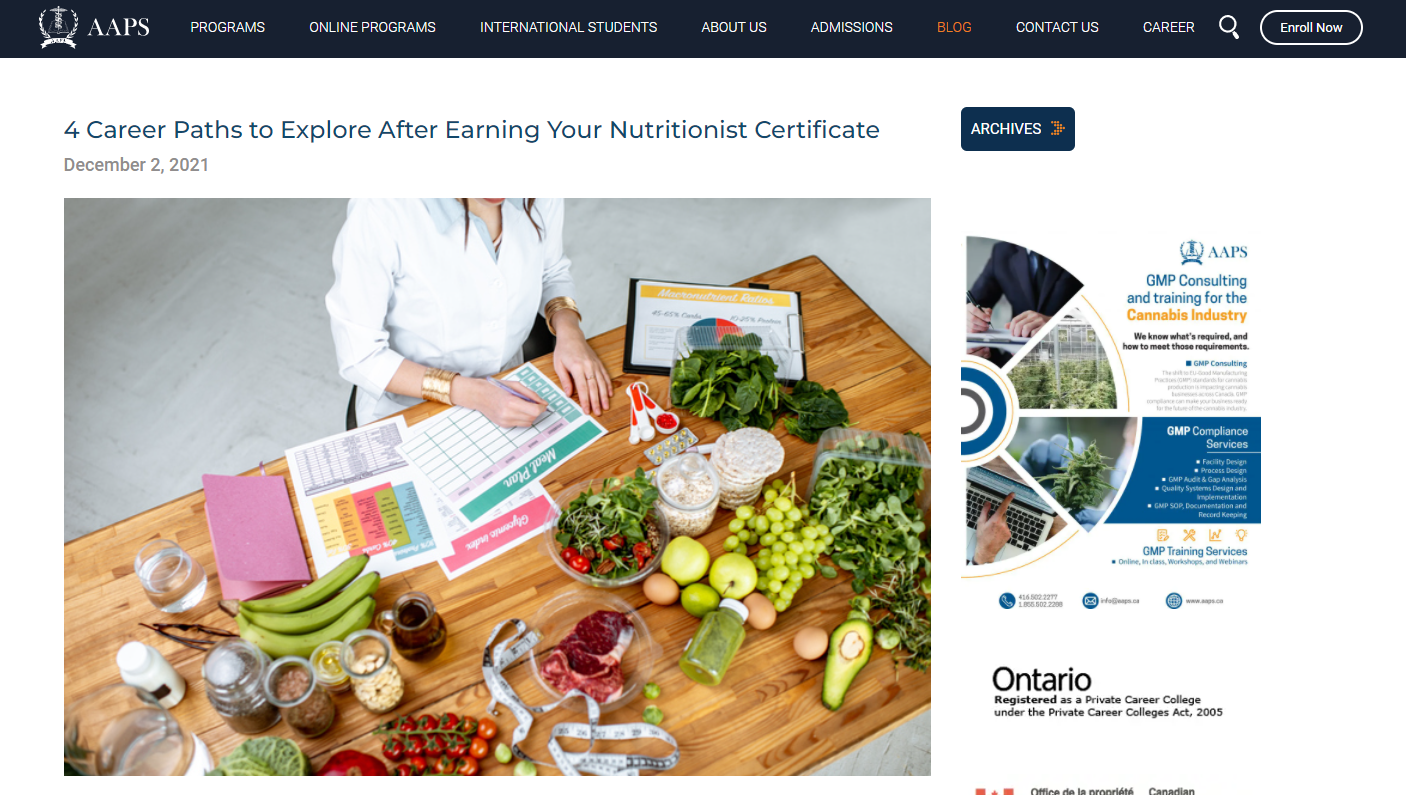
Source: Academy of Applied Pharmaceutical Sciences Blog
Ultimately, the key is to provide great value—giving prospects every reason to stay, read more, and explore your school’s other content. To get these results, you’ll need to start with some much-needed keyword research. According to HubSpot, 71% of marketers view the use of strategic keywords as their top strategy for SEO, making it all the more important for your school’s SEO approach.
Using the right keywords can significantly improve your SEO and content marketing efforts, particularly as it allows your school to provide content that is in high demand. In this way, you can enhance your discoverability and attract more prospects. When choosing your keywords, you’ll want to consider your prospects’ search intent and keep concepts like authority and monthly search volumes in mind as they can help you narrow down your options.
Ideally, you can choose keywords that are stable or trending upwards—boasting a high search volume, meaning that others are constantly using it to find search results. It would also be best if your chosen keywords have low competition, making it easier for your school’s content to stand out as a leading source. For evergreen content to work, it must address the search intent and work towards providing solutions to create the best value possible. These efforts combined can help you generate more organic traffic.
Consider testing different keyword research tools and using the Google Trends tool to discover the right topics and keywords for your school. The image below shows how schools can use the Google Trends tool to analyze interest in one keyword (i.e. “online school”) over a period of time to make more informed marketing decisions:
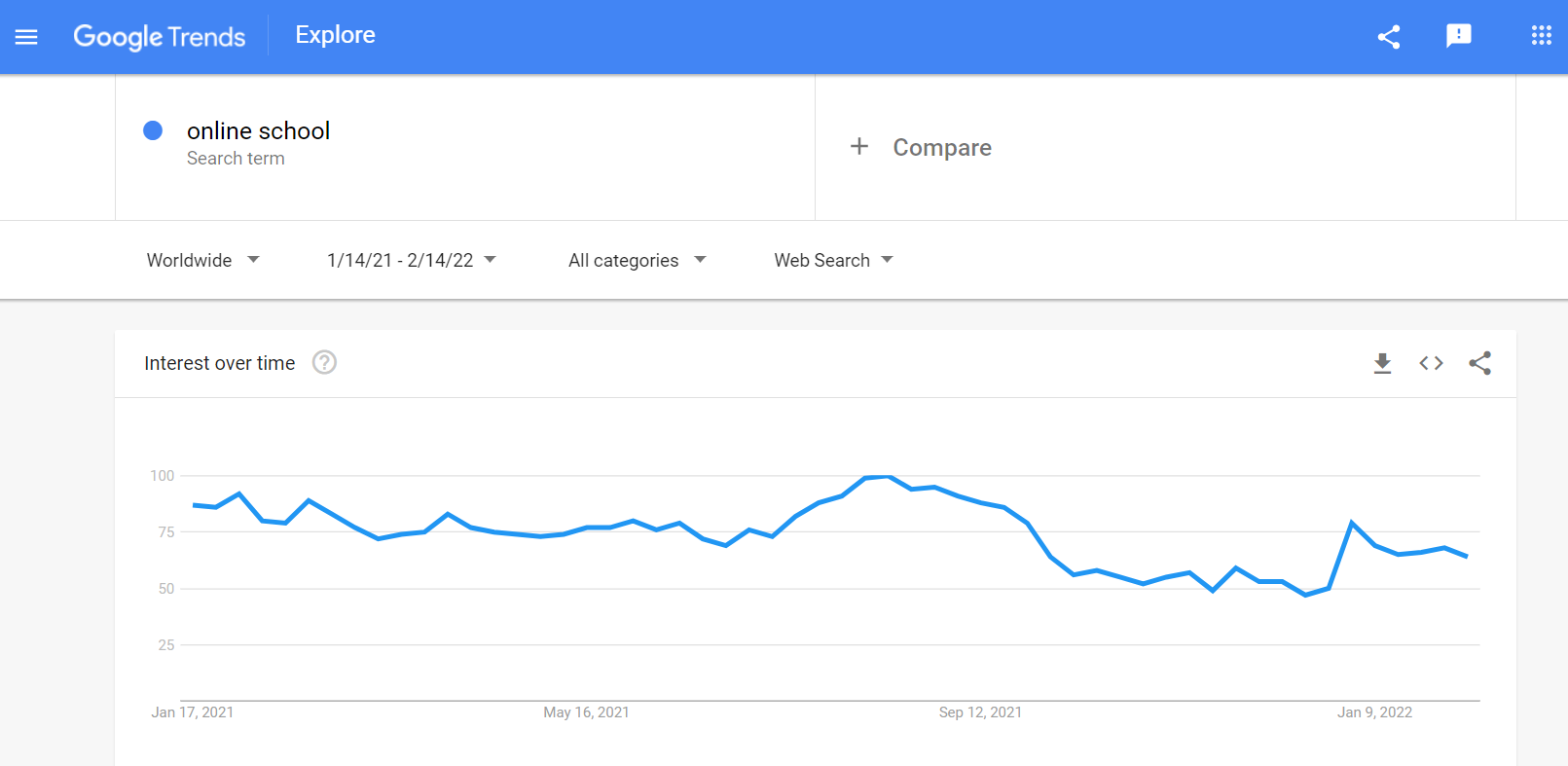
Source: Google Trends
2. Embrace an SEO Content Strategy to Meet Google’s E-A-T Principle
An effective SEO content strategy works to enhance your school’s search engines rankings. That’s because the content you create will be uniquely designed to fulfil Google’s E-A-T principle: Expertise, Authoritativeness, and Trustworthiness.
Evergreen content’s timeless exploration of relevant topics makes it a great way for your school to continually educate and inform interested prospects. All of the effort you put into creating quality content translates into stronger authority and expertise, naturally drawing prospects in. This process allows your school to build loyalty and trust with your prospects, giving search engines the necessary metrics to rank your website higher on search engine results pages (SERPs). As you continue these efforts, your search rankings will continue to rise and improve your chances of being discovered by the right prospect.
Keep Your Content Fresh and Relevant with Regular Updates
It’s no secret that relevancy is a key component of good SEO. Without it, your content no longer matters. Besides, for content to remain evergreen, you’ll need to ensure that your work stays up to date for current prospects. Schools seeking to remain ahead of the competition, always using their content to provide top value to prospects, will benefit from applying historical optimization techniques to older blog posts.
Historical optimization works by updating existing content before re-publishing, optimizing previously successful blogs for even greater rewards. Here, you’ll want to review:
- Keyword integration (title and headings)
- Alt text for images
- Internal and external links
- Meta descriptions
Example: In addition to covering a timeless topic that might interest prospects, John Cabot University’s blog post is well optimized for search—appearing at the top for the query, “Italian food studying abroad in Rome.” The blog post includes an optimized title, featuring notable keywords like “Study Abroad in Rome” to help boost its ranking.
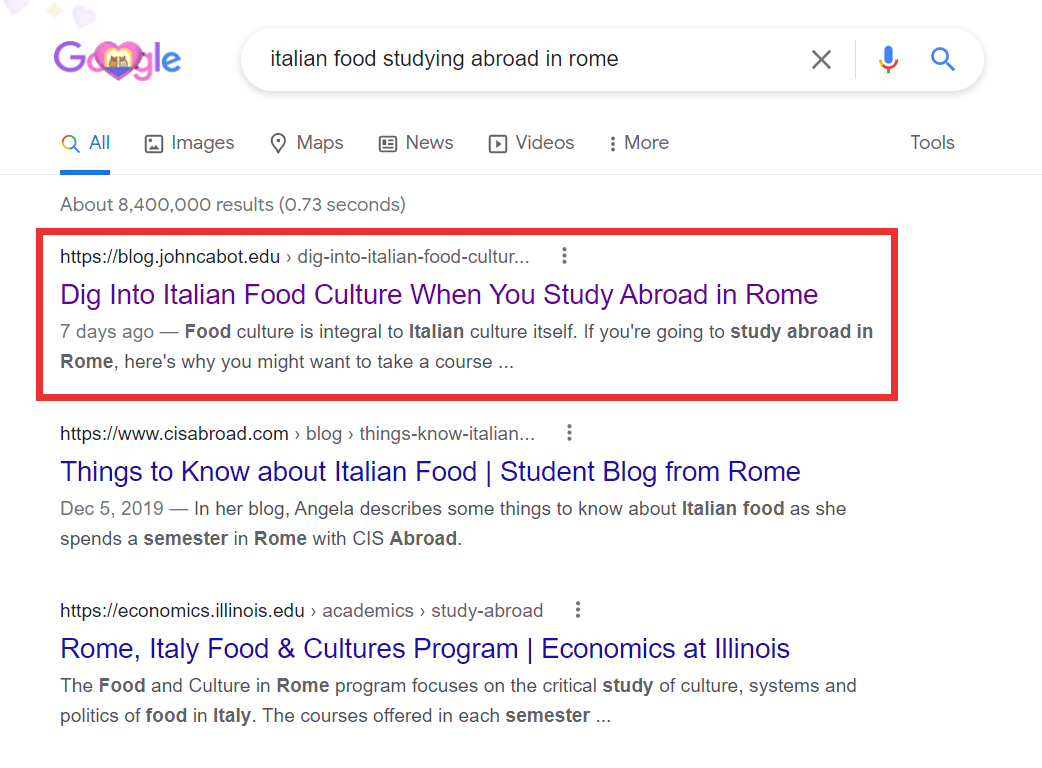
Through historical optimization, you can continue to extend the shelf life of your school’s evergreen content. Doing so can even help you future-proof your hard work for maximum impact and long-lasting benefits.
3. Apply the 10X Content Approach to Boost Your School’s Search Rankings
Search engines want to provide users with the most value. By creating evergreen content, your school’s interests and that of search engines naturally align. Evergreen content focuses on high quality to give users and search engines relevant content. However, applying a 10x content approach can help you push for even greater benefits.
10x content typically refers to content that is at least ten times better than the next best thing on that same topic—be it a long-form blog, video, or another piece of content. The goal is to create a unique and positive user experience, one that solves a problem and generates shares. Combining this content approach with evergreen ideas can help your school better compete with other high-ranking educational institutions for the top positions on search engines results pages.
It helps to start with the questions you want to answer, developing a framework to provide prospects with solutions and valuable insights. Having a strong understanding of your target personas and their needs is an important step you need to complete, especially since this can provide you with a useful framework for creating 10x evergreen content. Relying on visuals and high-quality sources is another step you’ll need to take to create content that leaves a long-lasting impression.
Example: Point Loma Nazarene University published an article on the benefits of studying marketing. In addition to a clear title and an eye-catching feature image, the blog delves into various aspects of marketing, providing an introduction, listing three benefits, and breaking down key skills, among other details. The article also features many internal links as well as other visuals to provide more value to readers, ultimately boosting its Google search ranking (as seen in the second image).
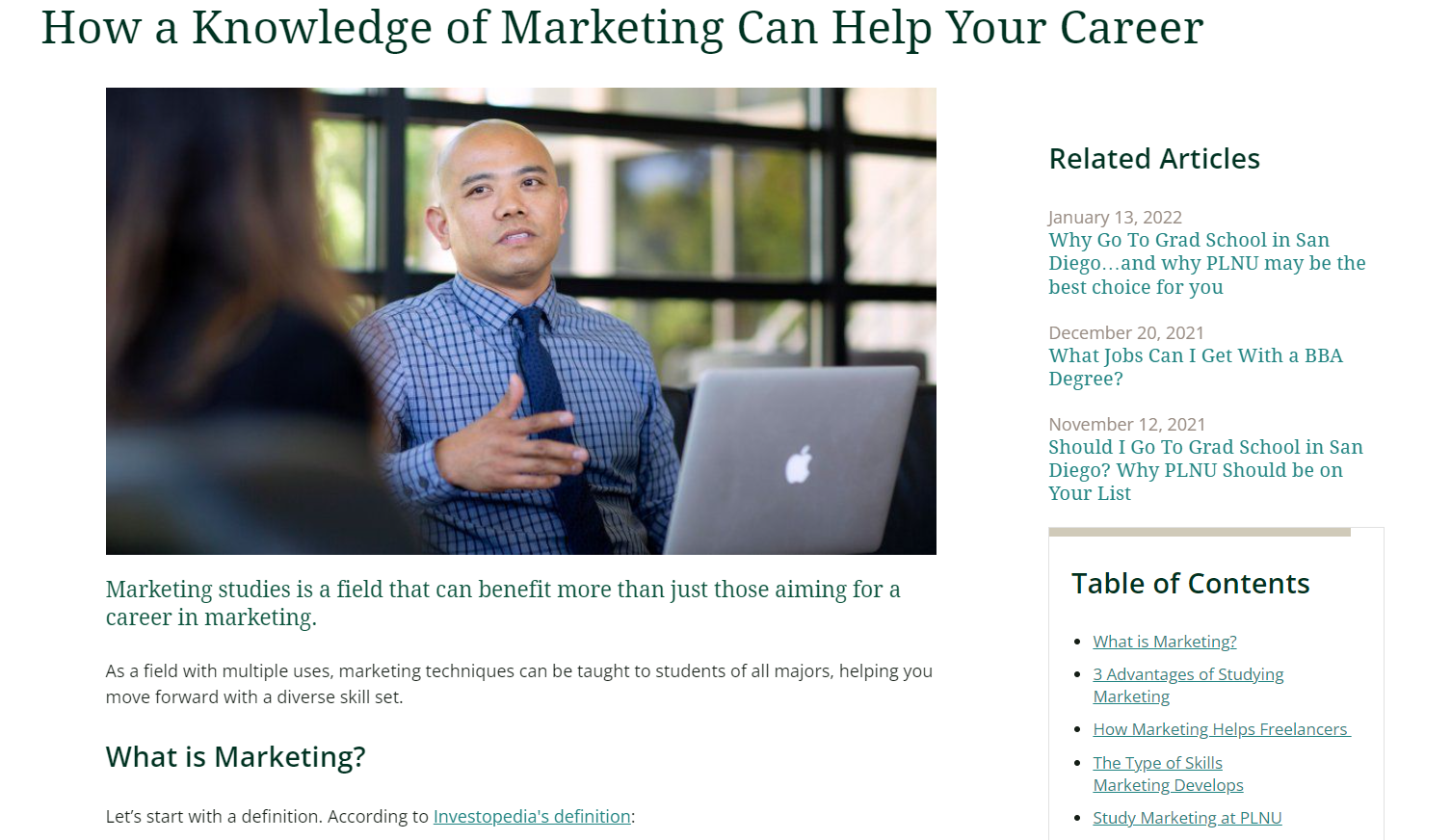
Source: Point Loma Nazarene University

4. Consider Link-Building as a Way to Strengthen Your Evergreen Content’s Impact
Link-building is often at the core of an effective evergreen content strategy. Backlinks, which are hyperlinks that direct traffic from one web page to another, can prove to search engines that your school’s website is trustworthy. The more backlinks you generate the better, but these links also need to come from reputable sources in order to transfer authority and make a positive difference in your school’s SEO campaign.
Example: Our Kids is a trusted source for families looking for top learning experiences. In an article on private schools’ response to COVID-19, they link back to a blog post by Randolph-Macon Academy. In the Ahrefs Backlink Checker tool, we can see the domain rating (DR) and the URL rating (UR) as well as the number of unique referring domains and the traffic generated by this backlink (from left to right):

Source: Ahrefs Backlink Checker
Here, higher numbers produce greater rewards. While it may take some time to see big gains, the effort you put into improving your content and SEO strategy will go a long way in producing long-lasting benefits later down the line.
Link-building may seem like a complicated task, but it starts with great content—making it a great fit for the evergreen (and 10x) content that your school produces. Once your evergreen content is ready, you can begin sharing it on social media and on third-party blogging sites to invite new traffic and boost your discoverability. You can also consider guest blogging, especially as statistics reveal that 60% of blog owners write between one to five guest posts per month.
Example: Study International, an independent online website and resource with various articles on international education, also publishes “partner content.” The example below shows an article on Study International that is also promoted by the University of Miami, with links that direct traffic to the University’s own website.
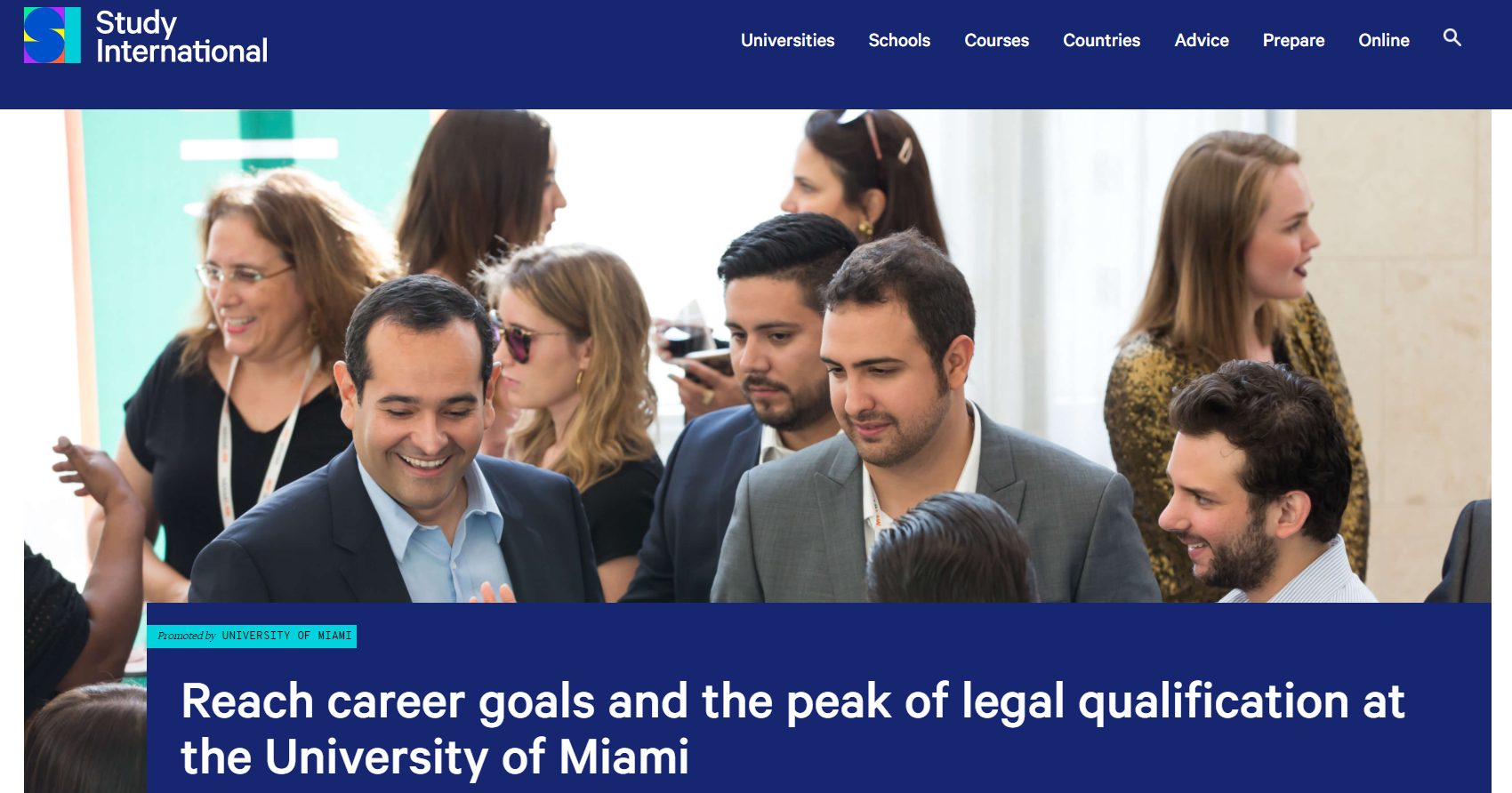
Source: Study International – University of Miami Blog Post
Used consistently and strategically, these tactics can help you increase your evergreen content’s ranking on search engine results pages. Just remember to always prioritize your prospect’s experience and engagement, tailoring your content to their needs, while keeping an open eye to Google’s algorithm changes and the latest SEO trends.
Bonus: Use Your Evergreen Content Strategically to Generate More Leads
Interestingly, you can also use evergreen content to enhance your school’s lead generation efforts. Since evergreen content is designed to attract new visitors and prospects, you’re given more opportunities to capture leads and thus grow your school’s audience. This is where you’ll want to add compelling calls-to-action (CTAs) that turn casual visitors into interested leads. Your CTAs can include forms, introduce relevant programs, or simply provide more information—giving prospects the chance to explore your website, learn more about your offerings, and build a more meaningful relationship with your school.
Example: The Vancouver School of Healing Arts includes a collection of CTAs at the end of every blog post. These CTAs include a program sign-up page, an info-request form, an info session registration link, a link to a handy admissions requirements page, as well as another to more content on the same topic.
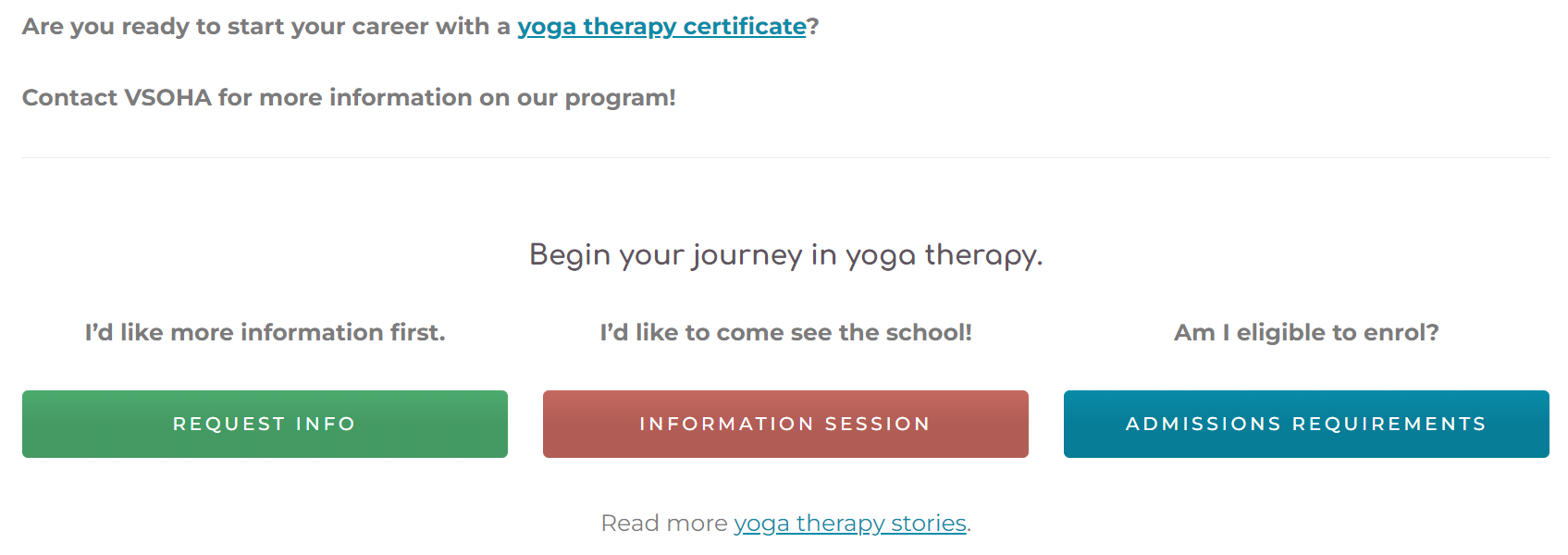
Source: VSOHA
Content and SEO go hand-in-hand, thus developing your content with SEO in mind and regularly optimizing it, even after publication, can help you rank higher in search engines results pages. Capitalizing on these efforts and adding effective CTAs into your evergreen content can help you further strengthen your digital marketing strategy, enabling you to boost student enrollment.







